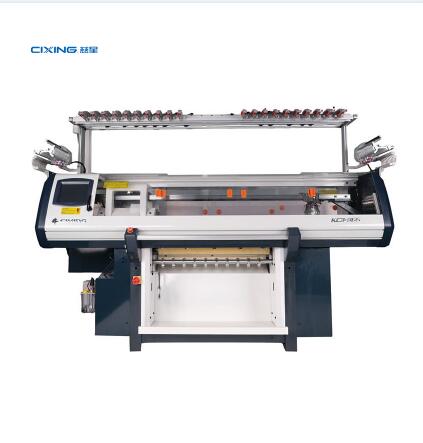Flat Knitting Machine Troubleshooting: Common Issues and Solutions
2024-11-25
Flat knitting machines are essential for producing high-quality knitwear, but like any complex equipment, they can encounter issues that affect performance and product quality. Understanding common problems and their solutions can help minimize downtime and maintain production efficiency.
1. Yarn Breakage
Symptoms: Yarn snapping during the knitting process.
Causes:
- Incorrect yarn tension.
- Poor-quality or damaged yarn.
- Sharp edges on machine components.
Solutions:
- Adjust yarn tension to suit the yarn type and knitting pattern.
- Inspect and replace damaged or low-quality yarn.
- Check for sharp or rough edges on guides and feeders, and smooth them out if necessary.

2. Needle Breakage
Symptoms: Broken or bent needles during operation.
Causes:
- Incorrect needle selection for yarn type or pattern.
- Worn-out or damaged needles.
- Machine timing issues.
Solutions:
- Use needles appropriate for the yarn thickness and type.
- Replace damaged needles immediately.
- Check and adjust the machine timing if needed.
3. Uneven Stitch Formation
Symptoms: Inconsistent stitch size or pattern irregularities.
Causes:
- Improper tension settings.
- Dirty or worn-out needles and sinkers.
- Yarn feed issues.
Solutions:
- Calibrate the tension settings for uniform stitch formation.
- Clean the machine components, especially needles and sinkers, to remove debris.
- Ensure smooth yarn feeding and check for tangles.
4. Dropped Stitches
Symptoms: Holes or gaps in the fabric where stitches are missing.
Causes:
- Faulty needles or needle bed alignment.
- Insufficient yarn tension.
- Incorrect programming for the pattern.
Solutions:
- Replace defective needles and ensure the needle bed is properly aligned.
- Increase yarn tension slightly to maintain stitch integrity.
- Review and correct the machine’s pattern programming.
5. Machine Jamming
Symptoms: Machine stops working or produces loud noises.
Causes:
- Foreign objects or debris in the machine.
- Overloading with too thick or inappropriate yarn.
- Mechanical wear and tear.
Solutions:
- Turn off the machine and inspect for obstructions. Remove any debris.
- Use yarns within the recommended specifications.
- Perform regular maintenance to identify and replace worn parts.
6. Fabric Defects
Symptoms: Wrinkles, loops, or misaligned patterns in the knitted fabric.
Causes:
- Incorrect tension settings.
- Improper yarn feeding.
- Faulty take-down system.
Solutions:
- Adjust the take-down tension to achieve a smooth fabric flow.
- Ensure the yarn feeder is functioning properly.
- Recheck the pattern programming to match design specifications.
7. Lubrication Problems
Symptoms: Noisy operation or increased wear on machine parts.
Causes:
- Insufficient or inappropriate lubrication.
- Build-up of old lubricant mixed with dust.
Solutions:
- Apply the recommended type and amount of lubricant at regular intervals.
- Clean the machine thoroughly before re-lubricating.
8. Pattern Programming Errors
Symptoms: Incorrect or incomplete knitting patterns.
Causes:
- Software glitches or incorrect input.
- Faulty connection between the control panel and machine.
Solutions:
- Verify the pattern data and reprogram if necessary.
- Check and secure all cables and connections between the control unit and the machine.
Maintenance Tips to Prevent Issues
- Regular Cleaning: Remove lint, dust, and debris to prevent buildup.
- Routine Inspections: Check needles, sinkers, and yarn feeders for wear and tear.
- Calibrate Frequently: Ensure tension, alignment, and programming settings are correct.
- Use Quality Yarn: Invest in high-quality yarn to reduce breakage and other issues.
Conclusion
Troubleshooting flat knitting machine issues requires a combination of technical know-how and routine maintenance. By addressing these common problems proactively, operators can ensure smooth production, improve the quality of knitted products, and extend the lifespan of their machines.


